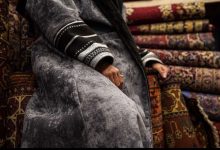ما هي دول شمال افريقيا

What are the North African countries? There are many countries in North Africa, which are distinguished by their strategic and diverse location. There are areas located on the coast of the Mediterranean Sea, and there are areas in the middle of the Nile River Basin, which is the largest country in the world. In addition to the most important tourist areas in it, its residents and the profession in which they work.
North Africa
The continent of Africa has been divided into five main regions, in order to facilitate the knowledge of each region and determine its strategic location, as it is considered the second largest continent in the world in terms of area, and the continent of Africa includes: North Africa, South Africa, East Africa, West Africa, and Central Africa, and the North African region is characterized by its distinctive geographical location, where most of its countries are located on the Mediterranean coast, and is characterized by the ease of agriculture in it because it contains the Atlas Mountains series near the seashore, which increases its magical character, especially at sunrise.[1]
What is the largest bay in the world?
What are the countries of North Africa?
The North African region includes several countries, including:
The Egyptian Arabic Republic
The Arab Republic of Egypt is located on the northeastern side of the continent of Africa, with an area of about one million square kilometers. It covers the African lands with a distance of one thousand and one hundred kilometers from east to west, and extends from north to south by a distance of one thousand and eight kilometers, and it borders Egypt from the western side. The Libyan Republic, to the south by Sudan, to the north by the Mediterranean Sea, while to the east it is bordered by the Red Sea and Palestine, including the land border with the Gaza Strip.
Features of the Arab Republic of Egypt
The Republic of Egypt is distinguished by some of its advantages and characteristics, including the following:
- Egypt owns the Nile Valley and Delta, which is located on the equivalent of 4% of its total area.
- It has the desert plateau, which makes the desert feature dominant.
- There are some high areas on both sides of the Nile, which reach eight hundred meters above sea level in the western regions, and about 1,000 meters above sea level in the eastern regions.
- Egypt includes a lot of agricultural land in the areas near the Nile Delta, the banks of the Nile, and around the main canals that branch off from it.
- The pastures in the Arab Republic of Egypt extend along the coastal strip of the Mediterranean, but they are somewhat small.
- Mount Catherine is the highest mountain peak in Egypt, located in the Sinai desert, with a height of 2,629 m above sea level.
- Al-Qattara is the lowest region in Egypt, as it drops by 133 m below sea level, and is located in the northern part of the Republic.
Tunisia
Tunisia occupies the ninety-first place among the countries of the world in terms of its geographical area, which is estimated at 163,610 square kilometers. Tunisia is located in the far north of the continent of Africa. The regions of Tunisia are divided into land and water bodies. The country, as for its water bodies, covers an area of 8,250 square kilometers of the total area of the state, and Tunisia is bordered to the east by the Libyan Republic, while it is bordered by the Mediterranean Sea from the east and north, while on the west it is bordered by Morocco and Algeria
Features of Tunisia
The topography of Tunisia is characterized by many advantages, including the following:
- The Atlas Mountains are located in the northeastern and northern region of Tunisia, extending from the Algerian border to the Mediterranean Sea.
- Tunisia is characterized by the presence of flat tourist areas and low hills.
- In the south of Tunisia is the Great Sahara, which is the largest desert at the level of the largest.
- There are fields of sand dunes in the central part of the Tunisian state, which is known as the Great Eastern Erg.
- There are a number of islands, such as:
- Kerkennah Islands chain, which is considered one of the low islands that do not exceed 13 m above sea level.
- The island of Djerba, which is connected to the mainland by an ancient Roman road, and extends over an area of four hundred square kilometers.
- Tunisian lands are characterized by the presence of the Wadi Mejdra River, which flows in it, and it is the longest river in the country, and its length reaches about four hundred and fifty kilometers. It also has dozens of tributaries, and it flows into the Mediterranean Sea.
Algeria
The city of Algeria occupies the first place in the continent of Africa, and the tenth in the world in terms of geographical area, with an area of about 2.38 million km. It is located in the northern part of the Sahara. Algeria shares the western borders with the Kingdom of Morocco, Mauritania, Mali and Niger from the side. On the south side, on the east side, there are Tunisia and Libya that share the same borders, and it is bordered to the north by the Mediterranean Sea
Features of the state of Algeria
Algeria is characterized by a number of characteristics, namely:
- The presence of many surface features in Algeria, such as the Sahara, which occupies 80% of the country’s area, in addition to the Atlas Mountains.
- Algeria is famous for having many sources of oil and natural gas.
- Algeria’s climate is characterized by drought, where the temperature reaches 21 degrees Celsius, and 24 degrees Celsius in the summer, while in the winter the temperature drops to ten degrees and twelve degrees Celsius.
Sudan
Sudan occupies the third place among the African countries in terms of area, with an area of 1.88 million square kilometers. Sudan forms a link between sub-Saharan Africa and the Arab world in North Africa, and this gives it a geographical location of great political importance. Sudan shares the western borders with Africa and Chad, as for the northern borders, it shares with Egypt, and it is bordered to the east by Eritrea and Ethiopia, and it is bordered by Libya in the northwest, and from the northeast by Sudan.
Sudan’s features
The Sudanese Republic is characterized by some characteristics, which are as follows:
- Sudan is divided into three main regions from an environmental point of view, which are:
- savannah region.
- Desert areas.
- semi-desert areas.
- Most of the Sudanese lands are characterized by their flat plain nature, such as: the Nuba Mountains, Jebel Marra, and the Red Sea Hills.
- Administratively, Sudan is divided into fifteen states, where each state has its own financial administration and a legislature, in addition to being headed by a governor, and a group of seven to ten ministers, and four or five members are delegated to manage the affairs of the various regions.
- The soil in Sudan differs from one region to another, where the clay deposits cover the soil of the eastern and central lands of the country, but the northern and western lands are covered with sand dunes, while the soil of the southern regions is made of red iron, and the lands along the banks of the Nile and the delta are distinguished, And other rivers the presence of alluvial soil.
Morocco
The Kingdom of Morocco is located in the northern part of the African continent, and is one of the countries that share its borders with: the Mediterranean Sea and the North Atlantic Ocean.
Features of the state of Morocco
Morocco is characterized by a number of characteristics and advantages, which are as follows:
- The presence of rugged mountainous areas.
- The presence of many vast lands of desert nature.
- It has a Mediterranean climate.
- Morocco consists of sixteen main regions in terms of administration.
- The regions in the Maghreb are divided into sixty-two governorates and districts. These districts and governorates include many cities and villages. The most important Moroccan cities are:
- Marrakesh.
- Tangiers.
- Tetouan.
- Sala.
- Axe.
- Agadir.
- Meknes.
- Oujda.
- Quneitra.
- Periscope.
- The city of Casablanca.
Libya
Tripoli is the capital of the Republic of Libya. It is located in the northern part of the African continent and covers an area of about 1,759,540 square kilometers. It is ranked one hundred and nine in the list of the largest countries in the world in terms of population. It overlooks from the north the Mediterranean Sea, and shares with the Egyptian Arab Republic in The eastern border, and on the southeastern side it shares with Sudan, on the south it is bordered by Chad and Niger, and on the west by Tunisia and Algeria.
Features of the state of Libya
Its characteristics and advantages are many, including the following:
- It depends for its economy on oil, which was discovered in the fifties of the last century, and this helped in the development of agriculture and industry.
- Libya is characterized by the development and location of medical care and education.
Population in African countries
According to studies published by the United Nations in 2019, the population of the North African region is 243,883,724, which is equivalent to 3.13% of the total world population, making it the third largest in Africa among the regional regions in terms of population, as the density The population of North African countries is estimated at about thirty-one people per km2, and about 52.3% of the population lives in urban areas. North Africa:
- Egypt: 100,388,073 people.
- Algeria: 43,053,054 people.
- Sudan: 42,813,238 people.
- Morocco: 37,054,232 people.
- Tunisia: 11,694,719 people.
- Libya: 6,777,452 people.
The area of the Arab countries and their population, in order
Associations bearing the name of North Africa
Several North African national societies appeared, which included a number of Tunisians, Algerians and Moroccans, during and after British colonialism. The most important of these societies are the following:
- North African Star Association: This association was founded in March 1926 AD, and was associated with the Algerian leader Messali al-Hajj.
- The Association of North African Muslim Students in France: It was founded in 1927, when a number of students from the three countries joined it in French universities.
- The Association of Muslim Students of North Africa in Algeria: It was founded in 1919 AD. It includes Algerian students and some Tunisian students at the University of Algiers.
How many Arab countries are in Africa?
History of North African countries
There have been many historical eras in the North African region with the countries in which it is located, and these eras are:
prehistoric age
The region of North Africa is the region that marked the departure and launch of man for modernity, as he came out of the continent to migrate out of Africa first, as the first inhabitants of central North Africa left behind large remnants. Early remnants of human occupation have been found in North Africa in Ain Al-Hanash, which dates back to the year 200,000 BC, as well as traces of some human remains were found in Jebel Irhoud in Morocco, in addition to finding caves in Tassili Nejer, north of Tamanrasset, Algeria, and the regions of North Africa in this era witnessed many vibrant scenes life that goes back to the Stone Age.
How many countries in the world, their names and capitals
Antiquity
Some North African countries emerged in ancient times, the most important of which are the countries of Carthage and Numidia, which are located northwest of Africa, then the Phoenician colonization came and took over most of North Africa, including Carthage, due to its commercial strength and maritime advantages in it, which made Carthage dependent on some mercenaries to extend an empire The Carthaginians even reached the Iberian Peninsula and Sicily, which led to the first Punic War with the Romans, and after more than a hundred years, the Romans conquered all the Carthaginian lands, which made the lands in North Africa turn into the Roman province of Africa in 146 BC, which led To the outbreak of the war between the Romans and the Numidians, and North Africa remained a part of the Roman Empire, until the Vandals came through the Strait of Gibraltar, and overcame the Roman power, which made the regions of North Africa lose the war, to become this period the height of the fall of the Western Roman Empire.
The modern era
The Ottoman Empire controlled all regions of North Africa except for the Maghreb, and the Spanish Empire after the Middle Ages controlled many coastal cities between the sixteenth and eighteenth centuries, and after the nineteenth century, colonization began by France, the United Kingdom, Spain And Italy, and they controlled most of the world and African countries, and then all the northern countries in Africa gained their independence in the fifties and sixties of the last century.
The most important tourist places in North Africa
North Africa is characterized by the presence of many tourist areas, such as:
Giza pyramids in Egypt
The pyramids in Giza Governorate, Egypt, are distinguished by their return to the Pharaonic era, when they were built for their kings, who are Khufu, Khafre and Menkaure, and are characterized by the following:
- The pyramid of Khufu is the oldest and largest pyramid in existence.
- Since its construction, the pyramids have been filled with hidden treasures, but they were robbed and looted during the Middle Ages.
- There are some huge statues and hidden rooms inside.
- Hieroglyphic inscriptions attract visitors.
Atlas mountains
The Atlas Mountains chain in Africa connects Tunisia, Morocco and Algeria, and is divided into four sub-chains. It is rich in a range of natural resources. The Atlas Mountains are characterized by the following:
- Attractive sunset with its wonderful view and breathtaking scenery when viewed on the highest peak in these mountains.
- There are different types of plants and animals in it.
Marrakesh in Morocco
The city of Marrakesh is one of the most famous tourist cities in the country of Morocco, located in Africa. It has many characteristics, as follows:
- Its narrow streets crowded with witty hawkers and countless sounds and smells.
- Historical Moroccan monuments, such as the Saadian Tombs or El Badi Palace.
Our homeland connects the Kingdom of Saudi Arabia between the continents of Asia, Africa and Europe
And here we have come to the end of our article entitled, What are the countries of North Africa, where we got to know the North African region and its inhabitants, as well as the eras that passed through, and the associations registered in its name.





